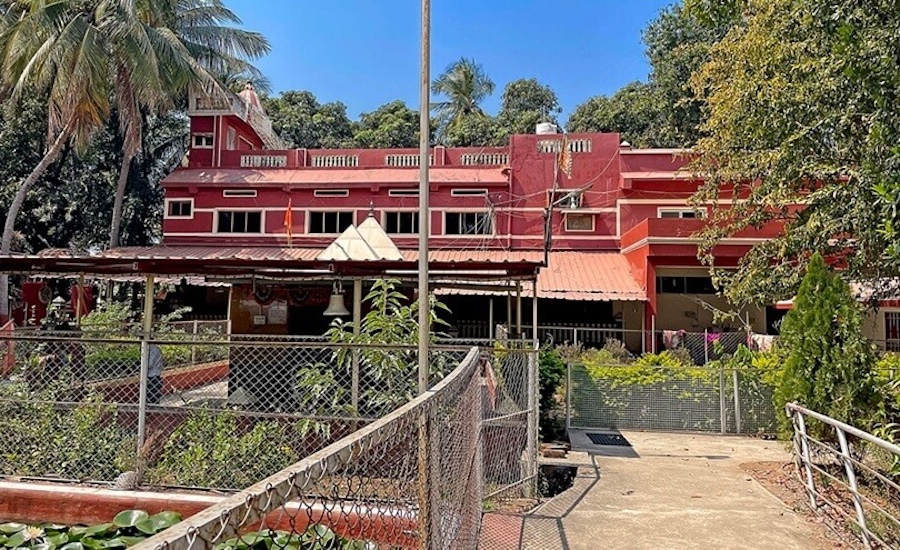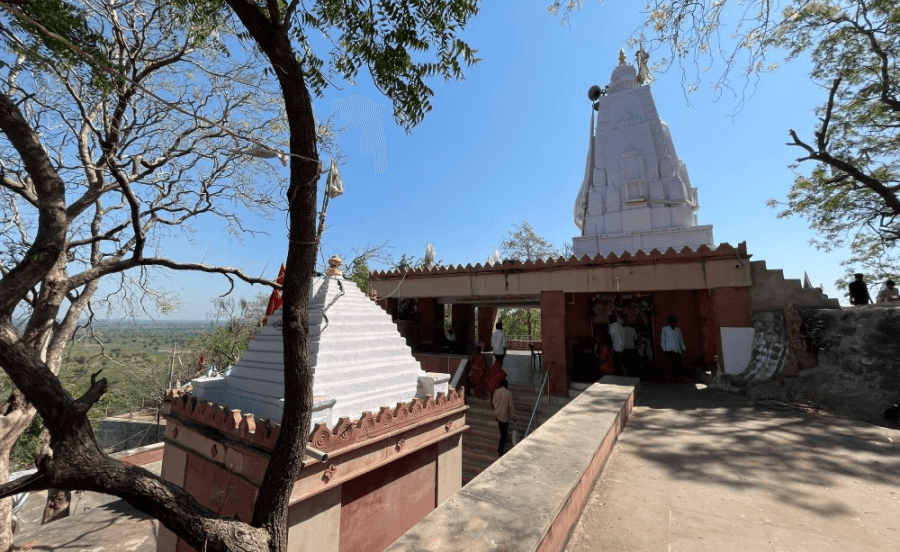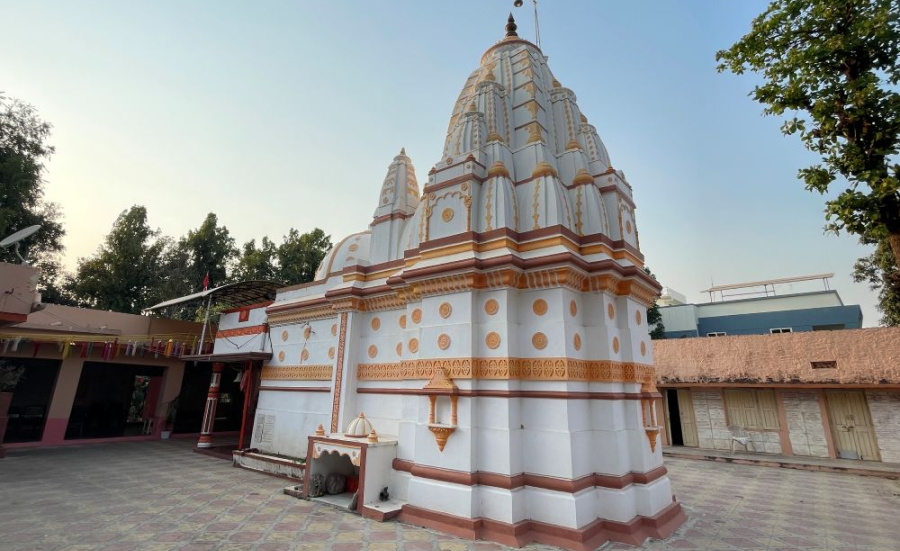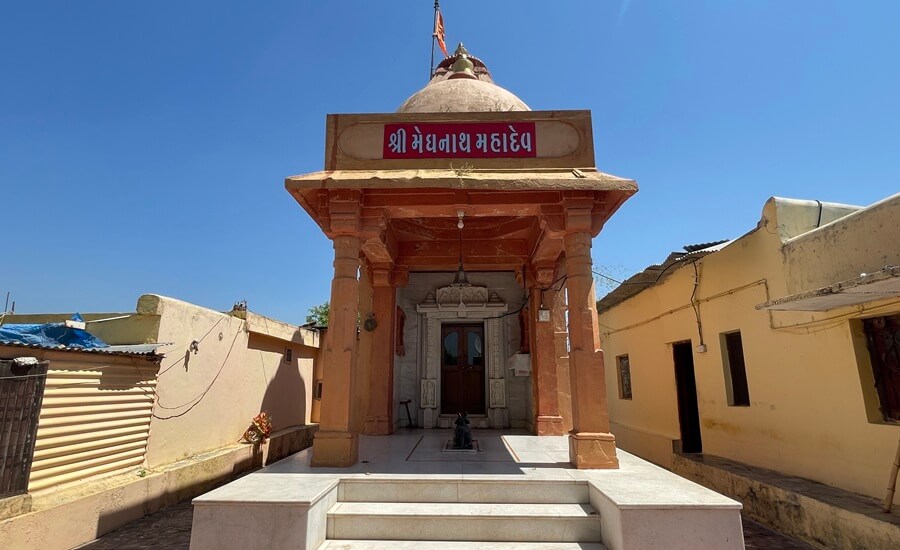
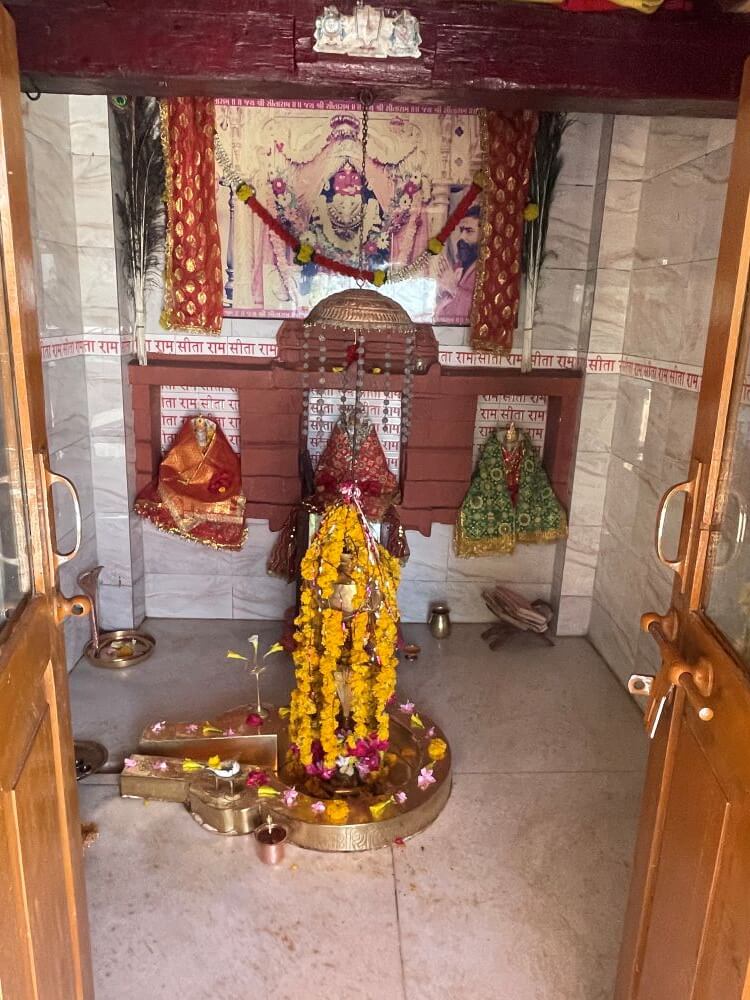
The river described by Adi Shankaracharya as ‘Eka Pavitra Vimala Nadi Trailokya-Vishruta’, meaning the sacred river renowned in all three worlds, is the Narmada. On the circumambulation (parikrama) route of this river, near Jior village in Nandod Taluka, lies the ancient Meghnath Mahadev Temple. It is believed that the Shivalinga at this site was installed by Meghnada, the son of Ravana, the king of Lanka. Hence, the temple received its name, Meghnath Mahadev. Devotees believe that performing Rudrabhishek on this awakened (Jagrit) Shivalinga fulfills their wishes.
According to mythological beliefs, sage Markandeya is regarded as the original initiator of the Narmada Parikrama. About 150 years ago, Shri Gaurishankar Maharaj of the Dhuniwale Baba tradition undertook a Narmada Parikrama with a large group. Since then, this tradition gained momentum. Numerous ancient and religiously significant temples lie along this pilgrimage path and one such temple, Meghnath Mahadev, finds mention in Revakhanda, a section of the Skanda Purana. When Yudhishthira was on a pilgrimage along the Narmada banks, he met sage
Markandeya. After offering salutations, Yudhishthira inquired about the significance of this sacred place and the information given by sage Markandeya has been recorded 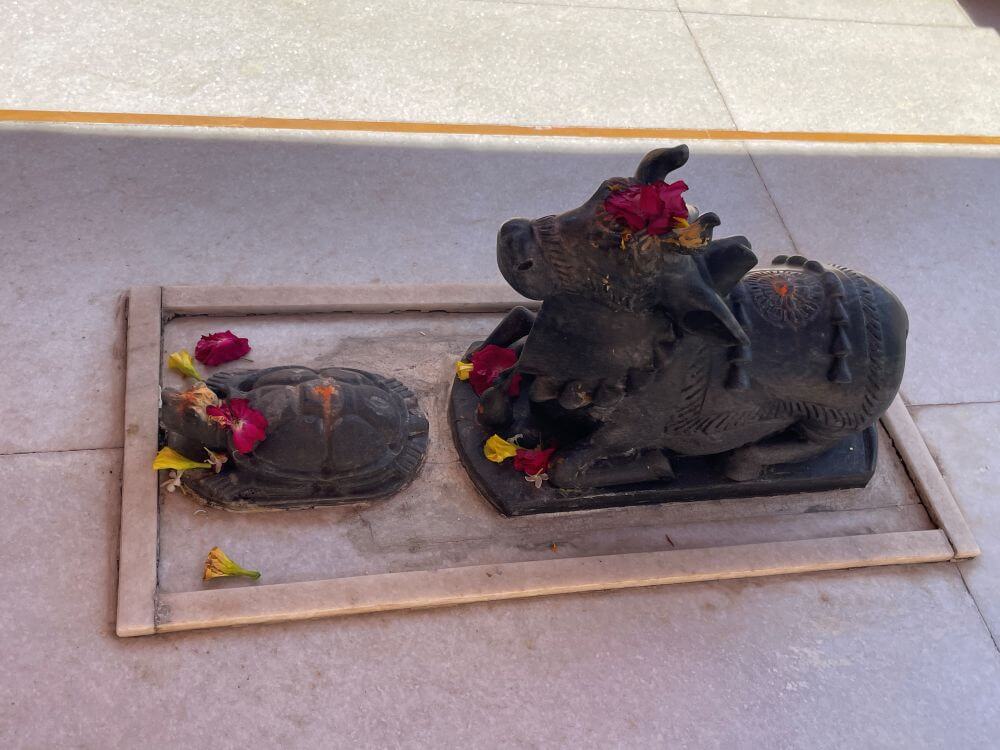 through oral tradition in the Revakhanda.
through oral tradition in the Revakhanda.
The legend of Meghnath is described in detail in Revakhanda, in the section ‘The Emergence and Glory of Meghnath Tirtha’. According to sage Markandeya, in Treta Yuga, Ravana, the grandson of sage Pulastya, married Mandodari, daughter of Mayasura. After some time, Mandodari gave birth to a son who roared like thunder upon his birth. Lord Brahma thus named him Meghnada. Meghnada was deeply religious and, upon reaching maturity, worshipped Lord Shiva diligently. According to Skanda Purana, he observed strict religious vows, performed rituals, donated, chanted mantras and undertook severe austerities. Once, Meghnada visited Mount Kailash, from where he carried a Shivlinga back with him. While returning, he placed the Shivalinga at a spot on 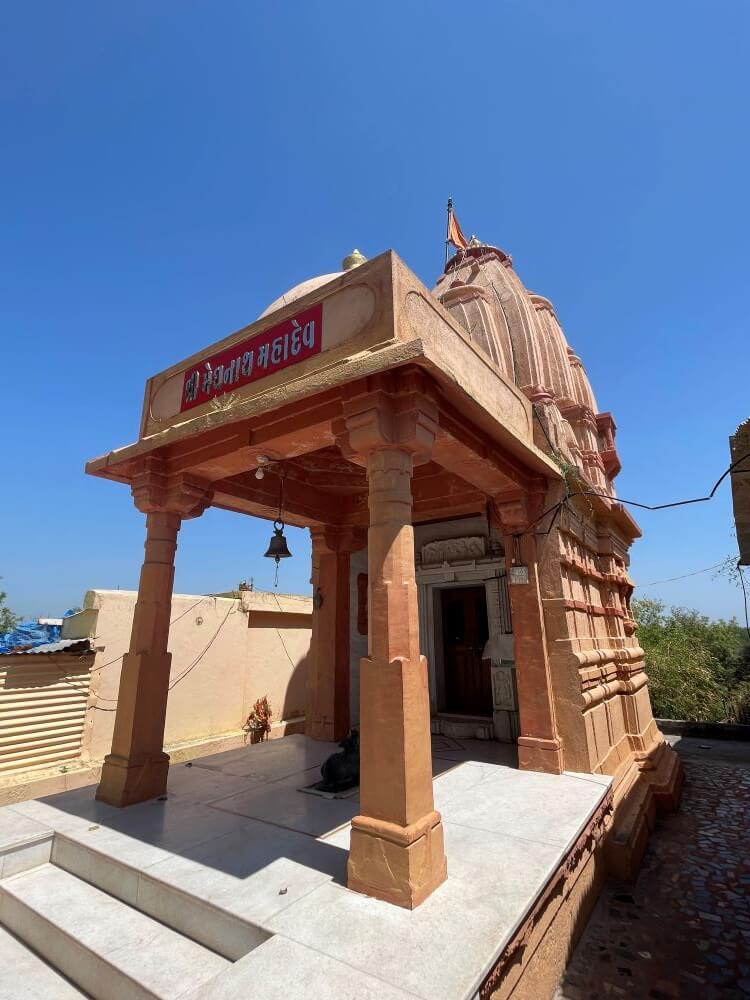 the banks of the Narmada river, took a bath, worshipped and started leaving. Suddenly, he noticed another Linga at that site. He picked up both and began walking, but unexpectedly, the Lingas slipped from his hands. One fell into the waters of the Narmada and became known as Madhyameshwar, while the other, which fell on the riverbank, became known as Meghnath Mahadev. This sacred place thus earned fame as Meghnath Tirtha.
the banks of the Narmada river, took a bath, worshipped and started leaving. Suddenly, he noticed another Linga at that site. He picked up both and began walking, but unexpectedly, the Lingas slipped from his hands. One fell into the waters of the Narmada and became known as Madhyameshwar, while the other, which fell on the riverbank, became known as Meghnath Mahadev. This sacred place thus earned fame as Meghnath Tirtha.
Further mythology states that Ravana, accompanied by Mandodari, performed severe penance at this site near Jior Pati on the banks of Narmada to obtain a powerful son. Due to this penance, he was blessed with a mighty son like Meghnada. At the same location where his father had undertaken penance for his birth, Meghnada installed the Shivlinga of his revered deity, Lord Mahadev. Owing to this legend, devotees visit this temple even today to perform rituals and yajnas for being blessed with a son. The site is also said to have attracted heavenly Apsaras, who would come here to worship Shiva, fetching water for Abhishek from the Narmada river’s ghats. Hence, the place is also referred to as Apsara Tirtha. Historically, the temple was renovated by Queen Ahilyabai Holkar and later in 2017, Mahant Shri Paripurnanand Tiwari undertook its latest 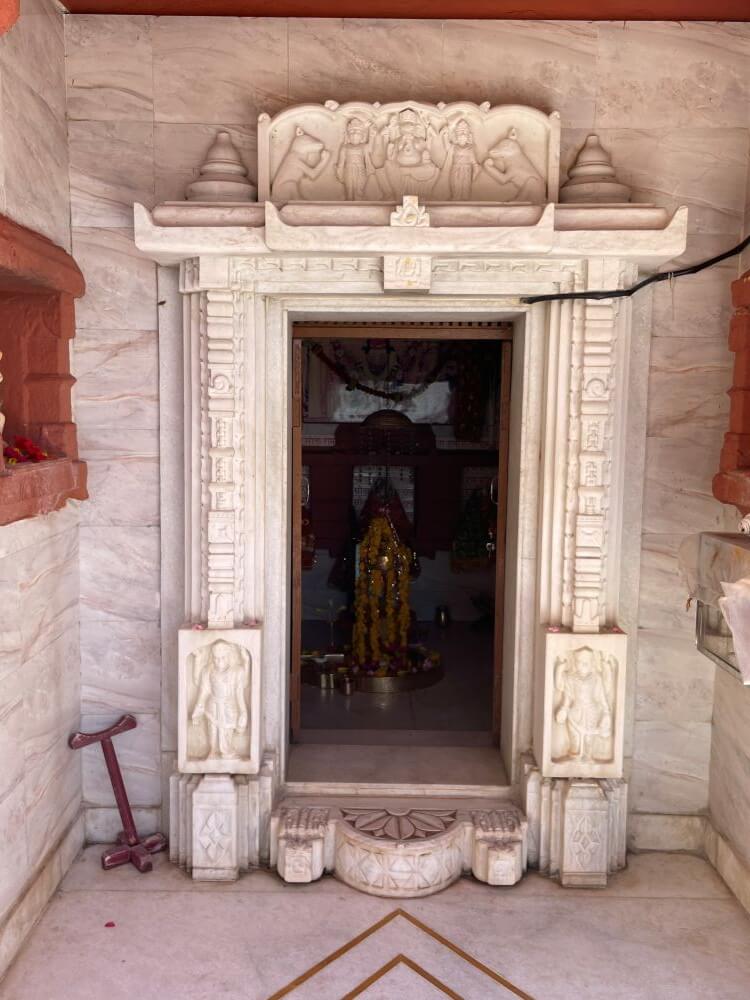 renovation, giving it its present form.
renovation, giving it its present form.
The temple premises are serene and peaceful. Visitors have to ascend steps from the banks of Narmada to reach the temple. The area surrounding the temple has approximately 2,500 Bel (Bael) trees. The temple grounds offer a beautiful view of the Narmada river. Adjacent to the temple is an Ashram, providing services to devotees undertaking the Narmada Parikrama. Architecturally, the temple features two dome-shaped spires (shikhars). Constructed of marble, the temple has an open assembly hall (Sabha Mandap) and an inner sanctum (Garbhagriha). Within the assembly hall, there are sculptures of Nandi (bull) and a tortoise, carved from solid black stone. On the wall near the sanctum, the shrine on the left houses an idol of Hanuman and the one on the right holds a Ganesh idol. Below the main entrance to the sanctum, there is a depiction of Kirtimukh. On both sides of the sanctum entrance are sculptures of gatekeepers (Dwarapal) and above them, at the center of the lintel, is an idol of Ganesh flanked by sculptures of attendants holding ceremonial flywhisks. The sanctum houses a Shivlinga covered by a serpent hood, where Abhishek (ritual pouring) takes place through a hanging pot (galantika).
Within the temple premises is a Yajnashala (sacrificial arena), where many devotees perform yajnas. Due to its location on the Narmada Parikrama route, many pilgrims frequent this temple.
